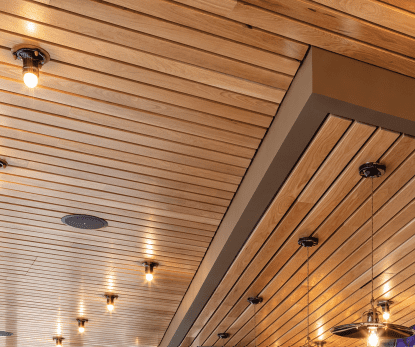In the world of design, the utilization of wood cubes has become increasingly popular, contributing to a shift in the way we perceive and interact with three-dimensional spaces. As we explore the nuances of incorporating custom wood cubes for a 3D impact, it’s crucial to understand the innate beauty of these elements and how they can elevate design aesthetics.
Wood cubes bring a tactile and visual richness to design, boasting diverse grain patterns and textures. The natural variations in different wood species provide a unique palette for designers to work with, allowing for a personalized touch in every project. The careful selection of wood species is crucial in achieving the desired aesthetics. It is imperative to select the appropriate material to align with specific design goals.
Understanding Wood Cubes: Aesthetic and Material Characteristics
The aesthetic allure of wood cubes lies in their simplicity and organic beauty. The texture of wood, combined with its grain patterns, adds warmth and character to any design. Oak, walnut, cherry, and maple are popular wood species due to their distinct characteristics. Oak, known for its strength and durability, might be preferred for a rustic touch, while cherry’s rich tones lend themselves to a more sophisticated aesthetic.
When incorporating wood cubes, understanding the material is key. Different wood species behave differently, influencing the overall look and feel of the design. For instance, the porous nature of oak absorbs stains differently compared to the smoother surface of maple. Delving into the specific characteristics of each wood type empowers designers to make informed choices that align with their creative vision.
Design Principles: Incorporating Wood Cubes for 3D Impact
Creating depth and dimensionality in design is an art, and wood cubes are valuable tools for achieving this goal. Whether used in furniture, wall art, or architectural elements, the arrangement and patterns of wood cubes contribute significantly to the overall 3D impact. By strategically placing cubes, designers can guide the viewer’s eye, creating visual interest and focal points within a space.
Experimentation is encouraged when working with wood cubes. Varying sizes, arranging cubes in geometric patterns, or even using asymmetry can yield dynamic results. The key to breathing life into a two-dimensional space is understanding design principles and using versatile wood cubes.
DIY Approaches: Crafting Custom Wood Cubes
Crafting custom wood cubes allows designers to infuse their projects with a personalized touch. For those inclined towards hands-on creativity, a step-by-step guide to creating custom wood cubes can be immensely beneficial. Basic tools like a saw, sandpaper, and wood glue are essential, ensuring safety measures are adhered to throughout the process.
Staining and finishing provide opportunities for customization, enabling designers to match the wood cubes to existing color palettes or create striking contrasts. The DIY approach not only fosters a sense of accomplishment but also ensures that the final design aligns seamlessly with the creator’s vision.
Applications Across Various Design Sectors
The versatility extends across various design sectors, proving their efficacy in diverse applications. In interior design, custom wood cubes can serve as decorative elements or functional pieces, adding both style and substance to a space. Furniture designers can incorporate these cubes into tables, shelves, or seating, creating visual interest while maintaining functionality.
In the realm of wall art, wood cubes provide a three-dimensional canvas for creative expression. Architects, too, can leverage the architectural flexibility of wood cubes, introducing them into building facades or interior spaces to enhance the overall design. The applications are vast, limited only by the designer’s imagination.
Maintenance and Longevity
To keep the wooden cubes looking beautiful and in good shape, it’s essential to take good care of them through regular maintenance. Regular cleaning, using appropriate products, and considering environmental factors contribute to the longevity of these design elements. It’s essential to educate end-users on proper care, ensuring that the beauty of wood cubes endures over time.
Understanding the environmental conditions of space helps in selecting the right wood species and finishing techniques. For example, in spaces with high humidity, choosing a wood species with natural resistance to moisture can mitigate potential issues. These considerations ensure that wood cubes remain a sustainable and enduring choice in design.
Elevate Your Designs with Wood Cubes
Wood cubes, with their innate beauty and versatility, present a canvas for designers to elevate their creations. From the aesthetic richness of different wood species to the strategic placement for 3D impact, these elements embody the artistry of design. Whether you are a seasoned professional or an enthusiast exploring DIY possibilities, the integration of custom wood cubes promises to transform spaces with a timeless and personalized touch.
If you are looking to incorporate custom wood cubes into your next project and experience their transformative possibilities, contact us today. We ensure that each wooden cube adds to the overall beauty and functionality of your space.





